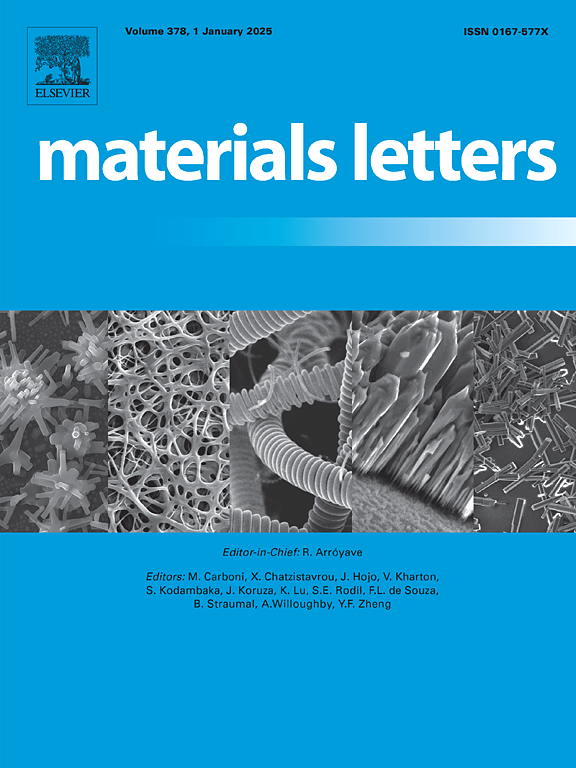In-situ tensile analysis of center segregation-induced microstructural inheritance and cracking mechanisms in the HAZ of wind power steel
IF 2.7
4区 材料科学
Q3 MATERIALS SCIENCE, MULTIDISCIPLINARY
引用次数: 0
Abstract
An in-situ characterization study was conducted on the initiation and propagation of cracks in the brittle microstructures induced by segregation inheritance in the HAZ of high-strength wind power steel using SEM and EBSD. The compositional segregation of the base metal is inherited into the HAZ. In addition to the traditionally identified alloying elements C and Mn, Nb and Ti also concentrate in the segregation bands, but the enrichment levels of most elements are decreased due to thermal cycling effects. Typical blocky M/A constituents along with tempered martensite or M/A form in these segregation bands, accompanied by the precipitation of blocky or elongated (Nb,Ti)(C,N) particles exhibiting a face-centered cubic (FCC) structure with dimensions on the scale of ∼ 5 μm. These large-sized (Nb,Ti)(C,N) particles exhibit high brittleness and tend to undergo self-fracture during formation process. Results from in-situ tensile tests demonstrate that segregation-induced microstructures with high stress in HAZ, including MnS and (Nb,Ti)(C,N) particles, act as crack initiation sources during plastic deformation. As the strain increases, cracks propagate perpendicular to the tensile stress direction and gradually evolve into macroscopic cracks, ultimately leading to fracture.
风电钢热影响区中心偏析诱发的组织继承及开裂机制的原位拉伸分析
利用SEM和EBSD对高强度风电钢热影响区内偏析继承引起的脆性组织裂纹的萌生和扩展进行了原位表征。母材的成分偏析被继承到热影响区。除了传统的合金元素C和Mn外,Nb和Ti也在偏析带中富集,但由于热循环效应,大多数元素的富集程度降低。在这些偏析带中,典型的块状M/A成分伴随着回火马氏体或M/A的形成,伴随着块状或细长的(Nb,Ti)(C,N)颗粒的析出,呈现出面心立方(FCC)结构,尺寸约为5 μm。这些大尺寸(Nb,Ti)(C,N)颗粒具有高脆性,在形成过程中容易发生自断裂。原位拉伸试验结果表明,在热影响区内,由偏析引起的高应力组织,包括MnS和(Nb,Ti)(C,N)颗粒,是塑性变形过程中的裂纹起裂源。随着应变的增大,裂纹垂直于拉应力方向扩展,逐渐演化为宏观裂纹,最终导致断裂。
本文章由计算机程序翻译,如有差异,请以英文原文为准。
求助全文
约1分钟内获得全文
求助全文
来源期刊

Materials Letters
工程技术-材料科学:综合
CiteScore
5.60
自引率
3.30%
发文量
1948
审稿时长
50 days
期刊介绍:
Materials Letters has an open access mirror journal Materials Letters: X, sharing the same aims and scope, editorial team, submission system and rigorous peer review.
Materials Letters is dedicated to publishing novel, cutting edge reports of broad interest to the materials community. The journal provides a forum for materials scientists and engineers, physicists, and chemists to rapidly communicate on the most important topics in the field of materials.
Contributions include, but are not limited to, a variety of topics such as:
• Materials - Metals and alloys, amorphous solids, ceramics, composites, polymers, semiconductors
• Applications - Structural, opto-electronic, magnetic, medical, MEMS, sensors, smart
• Characterization - Analytical, microscopy, scanning probes, nanoscopic, optical, electrical, magnetic, acoustic, spectroscopic, diffraction
• Novel Materials - Micro and nanostructures (nanowires, nanotubes, nanoparticles), nanocomposites, thin films, superlattices, quantum dots.
• Processing - Crystal growth, thin film processing, sol-gel processing, mechanical processing, assembly, nanocrystalline processing.
• Properties - Mechanical, magnetic, optical, electrical, ferroelectric, thermal, interfacial, transport, thermodynamic
• Synthesis - Quenching, solid state, solidification, solution synthesis, vapor deposition, high pressure, explosive
 求助内容:
求助内容: 应助结果提醒方式:
应助结果提醒方式:


